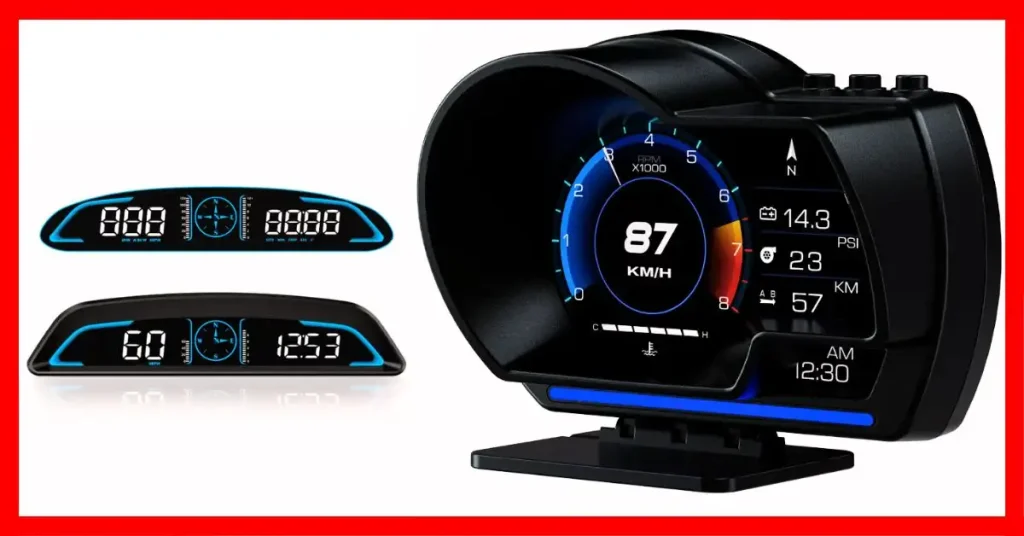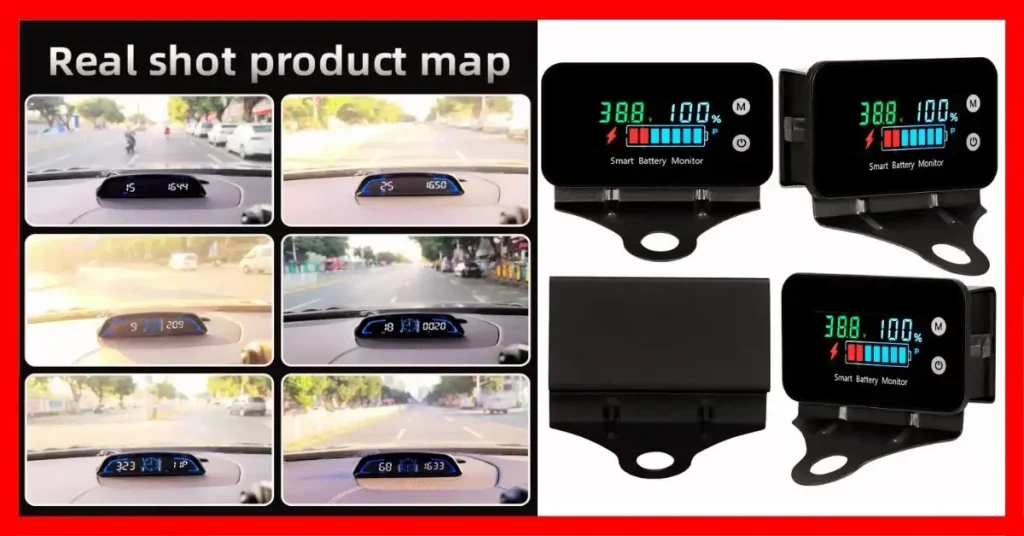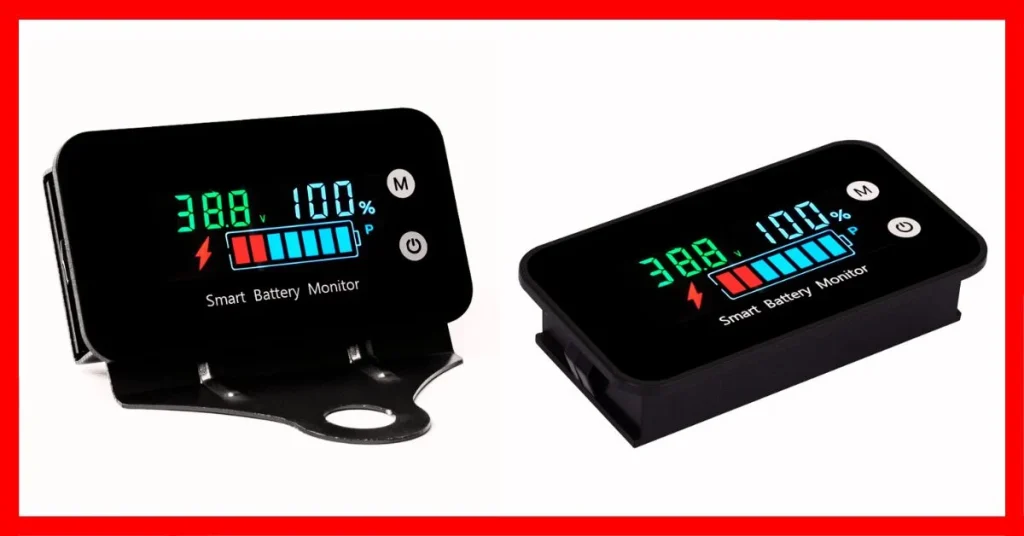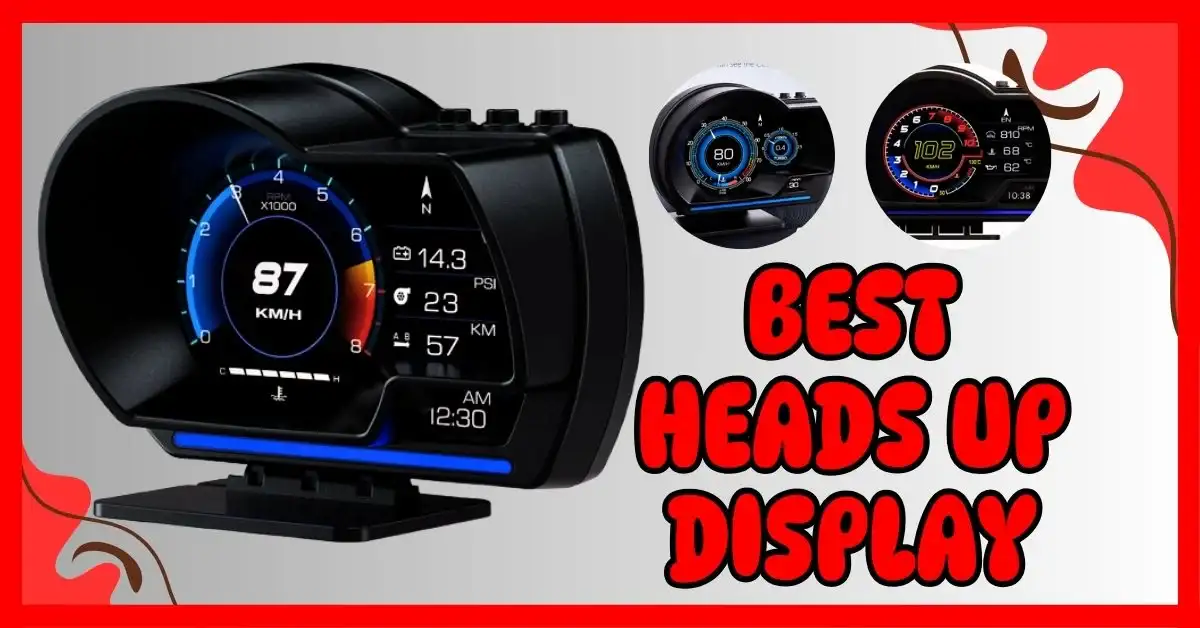I still remember the first time I used a car HUD on a long drive. It felt like something out of a sci-fi movie—my speed and alerts floating right in front of me. That moment showed me why finding the Best Heads Up Display is worth it. Over time, I’ve tested different aftermarket HUDs and learned which ones are reliable, easy to install, and safe for everyday driving in the U.S. In this guide, I’ll share my real-world picks and help you choose the best car heads up display for your ride.

What Is a Heads Up Display (HUD) for Cars?
A car heads up display, or car HUD, is a small screen that shows speed and alerts. It sits in your line of sight, so you don’t need to look down at the dash. In short, a HUD puts key info right on the glass where your eyes already are.
Some cars come with factory HUDs. These look neat but cost more and are found mostly in new or high-end models. An aftermarket heads up display is different. You can buy one, plug it in, and use it in almost any car.
I still recall my first drive with an aftermarket HUD. My speed floated on the glass, clear and bright. I felt like I was in a sci-fi scene, but safer too. I didn’t glance down once, and the road felt easier to watch.
Why Use an Aftermarket HUD? (My Real-World Take)
The first time I used a car HUD, I felt safer. I didn’t have to look down at the dash. My speed and alerts were right in front of me. This shows why a best aftermarket heads up display matters.
Safety is the top reason to use a HUD. It keeps your eyes on the road. You see speed, RPM, and alerts at a glance. A car HUD can help you react faster and avoid accidents.
A HUD also adds convenience. You can see speed, trip info, or navigation in one view. No fumbling with your phone or dashboard buttons. The best car heads up display makes drives easier and less tiring.
Cost is another plus. Built-in HUDs are pricey and often come with new cars only. An aftermarket HUD gives the same perks for much less. It’s a smart, affordable upgrade.
How I Chose the Best Heads Up Display for My Car
Picking a HUD felt tricky at first. I wanted one that was clear, simple, and useful every day. The best auto heads up display shows what you need without distraction.
I first looked at display clarity. Could I see it in sunlight? Did it adjust at night? The numbers had to be big and easy to read. A clear display keeps your eyes on the road.
Next, I checked compatibility. I wanted both OBD2 and GPS support. Some HUDs do only one. The right HUD works with most cars and gives full data.
Ease of installation mattered a lot. I did not want wires or drilling. Plug-and-play HUDs are quick and simple. Mine was ready in minutes.
Finally, I looked at extra features. Overspeed alarms, fatigue alerts, trip meters, and a compass can help on long drives. The right HUD makes driving safer and easier.
My Picks for the Best Heads Up Display in the USA
I have tested several HUDs and found three that really stand out. Each one is simple to use, clear to read, and adds real value while driving. These are my top picks for drivers in the U.S. looking for the best car HUD display.
1. Wiiyii P6 Car HUD – Best Dual-Mode OBD + GPS HUD
I like the Wiiyii P6 because it shows both OBD2 and GPS data. You can see your speed, RPM, and alerts at a glance. The display is bright in sunlight and easy on the eyes at night. My wife even said driving felt safer with it.
Best for: Drivers who want detailed info and stable performance.
Keywords: best car HUD display, best aftermarket HUD.
2. SinoTrack Digital GPS Speedometer HUD – Best Large Display Option
The SinoTrack HUD has a big screen that is easy to read. It shows speed, warnings, and navigation clearly. The display updates smoothly, so you get real-time info. I found it made long drives less stressful.
Best for: Drivers who want clarity and simplicity.
Keywords: best aftermarket car HUD, best car HUD head up display.
3. SUPNOVA IPX7 Waterproof Battery Monitor – Best for Multi-Vehicle Use
This HUD is waterproof and works with cars, motorcycles, RVs, and even boats. It gives alarms for speed, battery voltage, and more. I liked how it worked for all my vehicles.
Best for: People who need a HUD for multiple vehicles.
Keywords: best aftermarket HUD display.
Each of these HUDs has a clear display and useful features. They help keep your eyes on the road. Choosing the right one depends on what you value most—simplicity, extra data, or multi-vehicle use.
👉🏿👉🏻 Check Latest Price and Offer at Amazon 👈🏻👈🏿
👉🏿👉🏻 Check Latest Price and Offer at Amazon 👈🏻👈🏿
👉🏿👉🏻 Check Latest Price and Offer at Amazon 👈🏻👈🏿

How to Install an Aftermarket Car HUD (Made Simple)
Installing a car HUD is easier than it seems. I set mine up in under five minutes. No tools, no drilling. You can mount it on the dashboard or the windshield. I prefer the dashboard because it reduces glare from the sun.
Most HUDs use plug-and-play connections. OBD2 models connect to your car’s diagnostic port. GPS HUDs only need power from a USB or cigarette lighter. This makes setup quick and simple. Tip: check your car manual first to find the right ports.
After mounting, adjust the angle so the display is in your line of sight. Too high strains your neck. Too low, and you have to look down. I like to tilt it so the numbers float over the hood. You can see them without taking your eyes off the road.
Finally, test the features. Speed, RPM, warnings, and navigation should all appear clearly. I drove around the block to make sure mine worked perfectly. After that, it felt like I had a mini sci-fi cockpit in my car.
Installing the best auto heads up display is fast and safe. With a few minutes, you can make your drive smarter and safer.

My Driving Experience with a Car HUD
The first time I used a HUD on a long drive, I noticed something right away. I didn’t have to glance down at my dashboard every few seconds. My eyes stayed on the road, and I felt more in control. It made highway driving less stressful and way safer.
One day, I almost missed seeing my speed creeping over the limit. The HUD flashed a gentle warning just in time. I slowed down and avoided what could have been a costly ticket. That moment alone showed me how useful a HUD can be.
Night drives used to make me tense, especially in areas with poor street lighting. With the HUD, speed, RPM, and even navigation were clearly visible. I felt calmer, more confident, and focused. It’s like having a mini co-pilot right in front of you.
Using the best car heads up display has changed the way I drive. Small alerts, clear numbers, and constant info keep me alert. I drive with less stress and more confidence every time.

FAQs About the Best Heads Up Display
Q: What is the best HUD for cars?
The best HUD depends on your needs. For most drivers, I found the Wiiyii P6 to be reliable and feature-packed. It shows speed, RPM, and navigation clearly. A good HUD keeps your eyes on the road.
Q: Is an aftermarket HUD worth it?
Yes, it is. Aftermarket HUDs are cheaper than factory systems. They also work in cars that don’t have built-in HUDs. I felt safer and more aware using one.
Q: Does a car HUD drain the battery?
Most HUDs draw very little power. If you use an OBD2-connected HUD, it only runs while the car is on. Battery drain is minimal and rarely a concern.
Q: Which is better, OBD HUD or GPS HUD?
OBD HUDs are more accurate for speed and RPM. GPS HUDs work even in older cars without OBD2 ports. I personally prefer a dual-mode HUD that supports both.
Q: What is the best heads up display for USA drivers?
For USA roads, I like HUDs that show speed in mph and have night/day brightness settings. The Wiiyii P6 and SinoTrack models worked well in my tests. Both are easy to install and read at a glance.
Q: Do car HUDs work at night or in bright sunlight?
Yes, but brightness matters. Most aftermarket HUDs let you adjust brightness for day or night. I found that setting it slightly lower at night avoids glare, while full brightness helps in strong sun.
Q: Can I use a HUD in any car?
Almost any car can use an aftermarket HUD. GPS-only HUDs work in any vehicle. OBD HUDs need an OBD2 port. I used mine in both my older and newer cars without problems.
Final Thoughts – My Pick for the Best Heads Up Display
Using a HUD really changes your driving. You don’t have to look down at the dashboard. Your speed and directions are right in front of you. It feels safer and less stressful.
If you want the most feature-packed option, I recommend the Wiiyii P6. It shows speed, RPM, and navigation clearly. It works with both OBD and GPS. If you prefer simple and clear displays, the SinoTrack HUD is great. Both made me feel more confident on the road.
Once you try a HUD, it is hard to go back. It is like having a co-pilot who never blinks. You get warnings, speed, and directions at a glance. Driving just feels smoother and safer.
To Get More About Car Accessories Product You Can Visit Our Site. If You Found our Posts Helpful Leave a Comment Below

